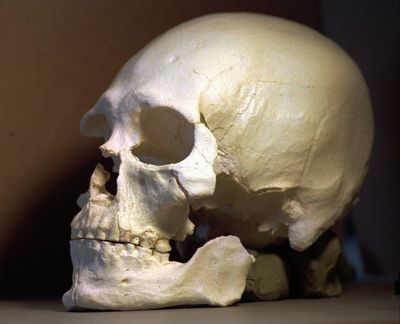Tribes commemorate 20 years since Kennewick Man discovery

KENNEWICK – It was 20 years ago that the ancient skeleton known as Kennewick Man was discovered.
Members of numerous Indian tribes gathered Thursday along the Columbia River in Kennewick to commemorate the event. They included representatives from the Umatilla, Nez Perce, Yakama, Colville, and Wanapum tribes.
The bones were found on the banks of the river on July 28, 1996, by people who were attending the annual hydroplane races in the Tri-Cities.
That triggered a lengthy legal fight between tribes and scientists for custody.
In April, the U.S. Army Corps of Engineers began the process for returning the bones, which Indians refer to as the Ancient One, to the tribes for burial.
The bones are currently at the Burke Museum in Seattle until the corps determines who will receive them.
“As we recognize the Ancient One’s discovery, we also mourn for him,” said Armand Minthorn, Board of Trustee member for the Umatilla Tribes. “He is our ancestor, and yet he lies in a museum rather than to rest with his people.
“It’s been 20 years, and he is still being denied his right to a proper burial,” Minthorn said.
Congress is also considering a bill that would give the bones directly to the five tribes.
“We need Congress to pass this legislation because 20 years of delay have demonstrated that there is no guarantee that the law will prevail,” said Aaron Ashley, a board member of the Umatilla Tribes. “The Ancient One’s Native American identity has been proven beyond a doubt.”
Last year, new genetic evidence determined the remains were closer to modern Native Americans than any other population in the world. Following that, the corps began to re-examine Kennewick Man’s status.
Most scientists trace modern native groups to Siberian ancestors who arrived by way of a land bridge that used to extend to Alaska. But features of Kennewick Man’s skull led some scientists to suggest the man’s ancestors came from elsewhere.
Researchers turned to DNA analysis to try to clarify the skeleton’s ancestry. They recovered DNA from a fragment of hand bone, mapped its genetic code and compared that to modern DNA from native peoples of the Americas and populations around the world.